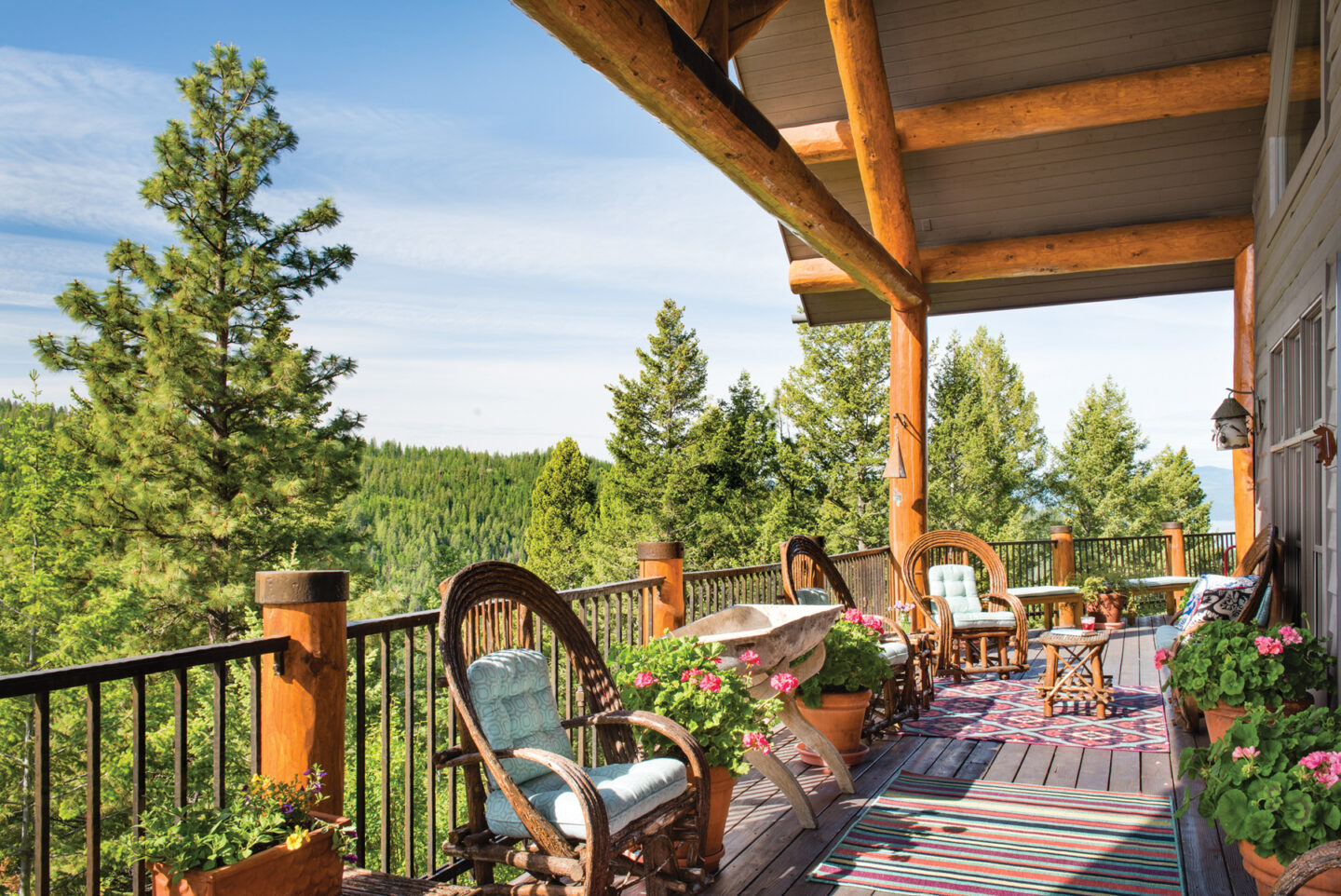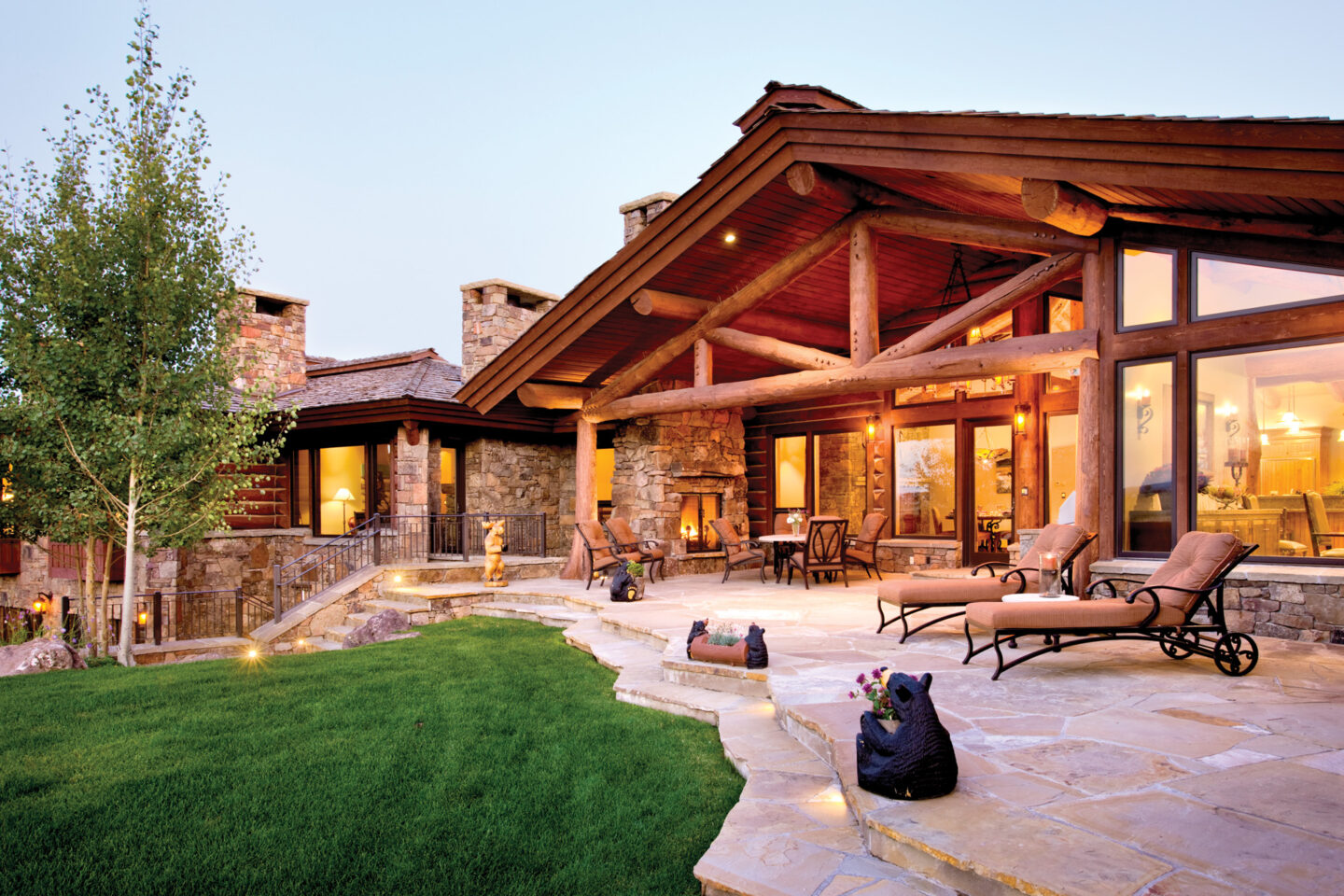By choosing the right builder and using technology for building updates, long-distance building can be similar to building next door.
With interest rates and the stock of available new homes at record lows, perhaps you’ve decided it’s time to build that second home you’ve always wanted. Or maybe your job is now fully remote, and you and your family want to live in a rural area with views for miles and embrace a slower pace of life. “Many of our clients are seeking to leave cities,” says Matt Franklin, lead architect at PrecisionCraft Log & Timber Homes, Meridian, Idaho. Whether you’re building across the street or across the country, many of the steps in the home-building process are identical, say architects, log and timber home producers and contractors, including:
Determine Your Budget
“One can’t go shopping for a used home without having a ballpark budget; nor can one when designing and building a new dream home,” says Diana Allen, architect and director of design at Woodhouse: The Timber Frame Company, Mansfield, Pennsylvania. “Budget is one of the first conversations we have with potential clients. We want to make sure before pencil hits paper that the size of the home, the estimated budget for the entire project—including items that we don’t handle, such as installing utilities and driveway—are realistic numbers and specific for your region where you plan to build.”
“We have a series of dashboard conversations once a client selects our company,” Allen says. “We have an internal dashboard that puts everyone from sales to architect on the phone to review the scope. If the project meets the ‘realistic to build that size at that budget in that region’ test, we then do a dashboard with the clients added this time, so everyone has the same expectations. We believe in complete honesty and transparency upfront. We want you to build, not just design a pretty house on paper.”
Take Advantage of Technology
Today’s technology makes distance building much easier by using email, digital photos, Internet videos, and text, notes Wayne McInnis, a builder/dealer for Expedition Log Homes in Stow, Maine, since 1986. “Nearly all my clients are from New York, New Jersey, and New England states, building second homes in Maine. During each building inspection completed, we typically send photos and video of the progress to our clients, who seem to enjoy seeing that.”
As you’re shopping for your log or timber-frame home producer, ask producers how they can help you achieve a long-distance build. Some producers, for example, can provide three-dimensional, photo-realistic renderings of your home’s design on your actual building site to help you visualize how the home will live.
Once the home’s infrastructure (foundation, walls, beams) is complete, you may want to install a security system—video cameras let you watch over your home, inside and out. Others, wanting immediate eyes on the ground (so to speak), have the general contractor install game or trail cameras with integrated solar panels for power. These devices can provide day- and nighttime photos with a 100-foot flash range and 720p HD video viewing, with imagery delivered to your cell phone or laptop. This way, homebuyers can observe every step of the build.

Finalize Your Design
The most important step before choosing a log or timber-frame home producer is finalizing your new home’s design, McInnis says. Whether you are opting for a stock design that’s been built many times before (with the benefit of design errors being eliminated), a stock plan that’s been modified slightly, or a completely custom design by an architect or designer, it’s only when the design is finalized that you can begin evaluating pricing and delivery costs from different producers.
Many homebuyers spend months researching each company’s building system, trying to determine which one is the best. But the truth is: there isn’t one perfect building system. Otherwise, everyone would be using the same one. McInnis warns not to make yourself crazy with this decision. Decide on a look that you like and have at least three companies bid on your finalized design. Then consult with your builder or general contractor on the results.
Choose Your Builder or General Contractor (GC)
Perhaps the most important decision in a long-distance build is deciding who will make the home a reality, says Remington Brown, design manager at Stonemill Log & Timber Homes in Knoxville, Tennessee.
“The general contractor or GC is the most important decision you’ll make when building a home. You have to do the old-fashioned thing and get neighborly. Ask local folks who’ve also built in the area for names, ask the codes officials, ask your log and timber-frame home package provider if they have any contractors or past clients in the area. We keep a list of GCs everywhere we build so we can hand out references. Once you have a list of names, it essentially falls on the prospective homeowners to vet like nobody’s business. Anything long distance will require a leap of faith, but it certainly goes better if the folks you’ve hired have several ringing endorsements from other locals.
“I would push a build back a few months if it meant waiting for the right contractor. Entrusting someone else to manage a massive financial undertaking several hundred miles away is no cakewalk. I would just urge people to allow more time for the GC selection process to find someone they are truly comfortable with. Any log and timber-frame home company who is intent on keeping their word-of-mouth referrals alive won’t be handing out shady contractor recommendations. We take our list of names seriously and really like to focus on building relationships with GCs because it becomes a win-win for everyone,” Brown says.
Visit in Person for High-Touch Items
McInnis says that homebuyers can choose cabinets, plumbing, hardware, and lighting fixtures from the Internet. “But our preference is to bring homebuyers to local showrooms to select tile, granite countertops, flooring and appliances, because those are high-touch items.”
Practice Patience
Most of all, practice patience and manage your expectations, McInnis advises. “Installing infrastructure, the foundation, the home’s framing, envelope, and roof is all very dramatic, and it happens within a matter of weeks. But the interior improvements take time and it’s much less dramatic. It can seem like there’s nothing happening. But there is, so be prepared for that.”
Because of the vagaries of Maine’s weather, McInnis doesn’t specify completion dates in his contracts. “People don’t want you to rush, particularly on the interior finishes. They want you to take your time and do high-quality work.”
Don’t be afraid of a long-distance build. By having frequent, informative conversations with your builder and following the steps above, building from afar has never been easier.

